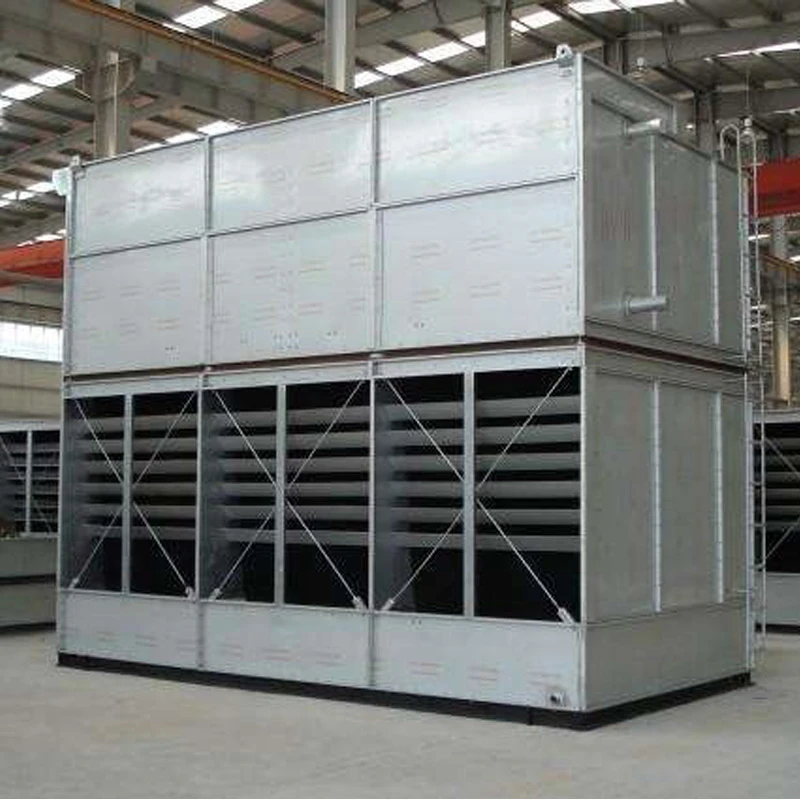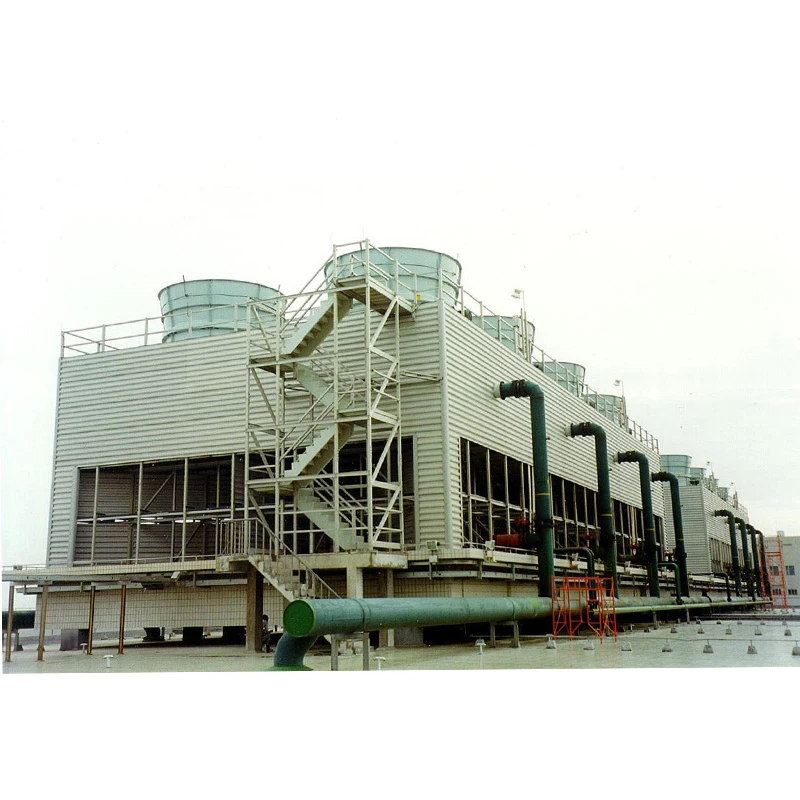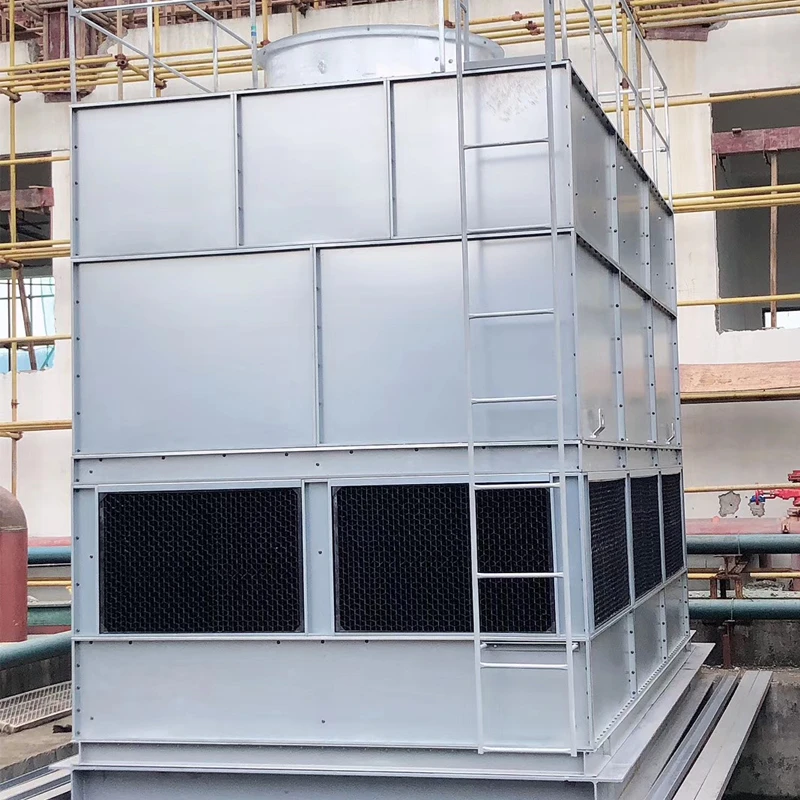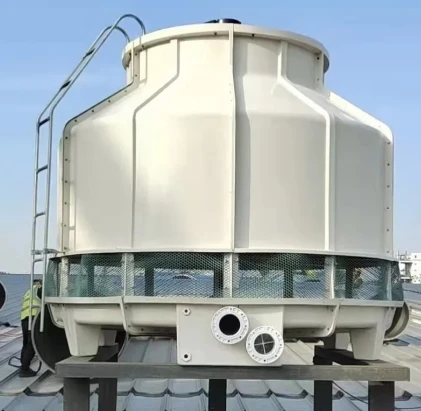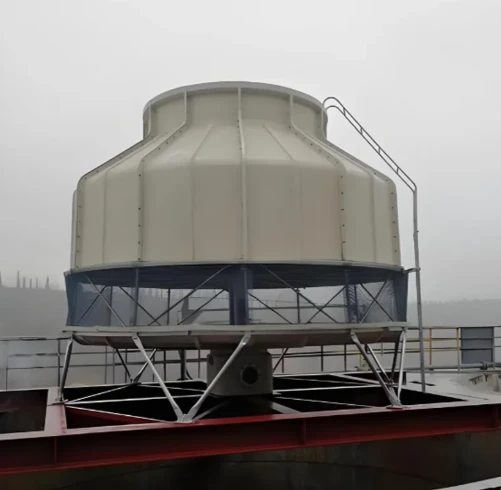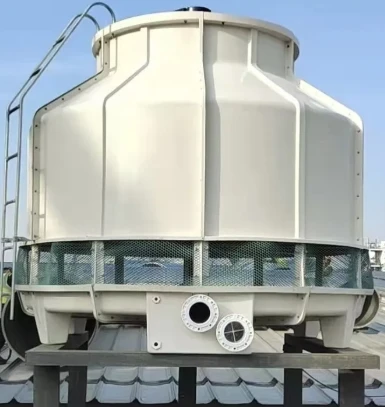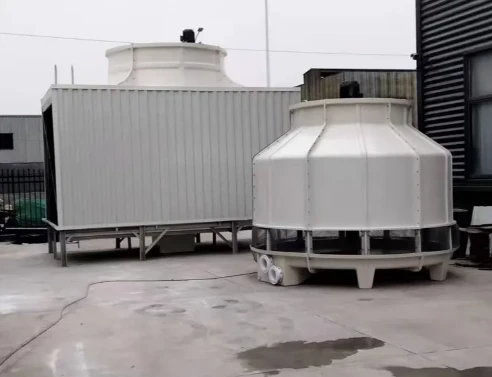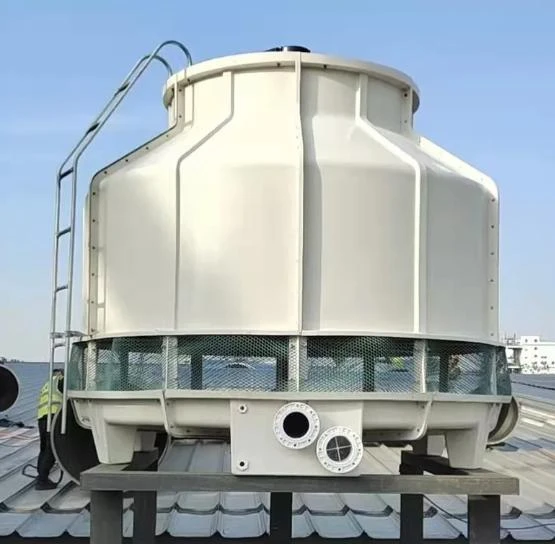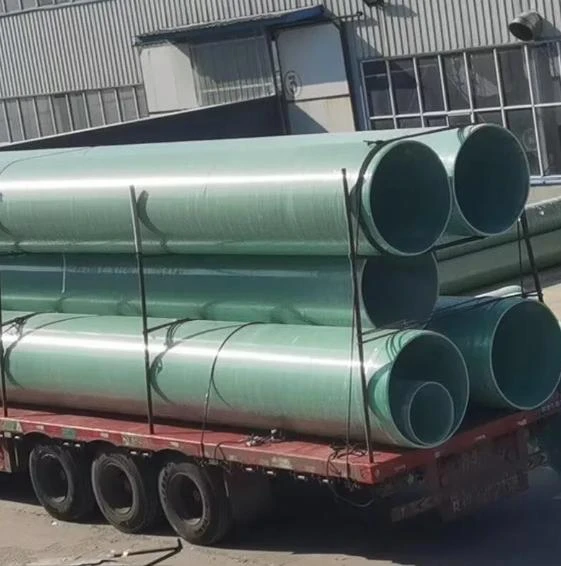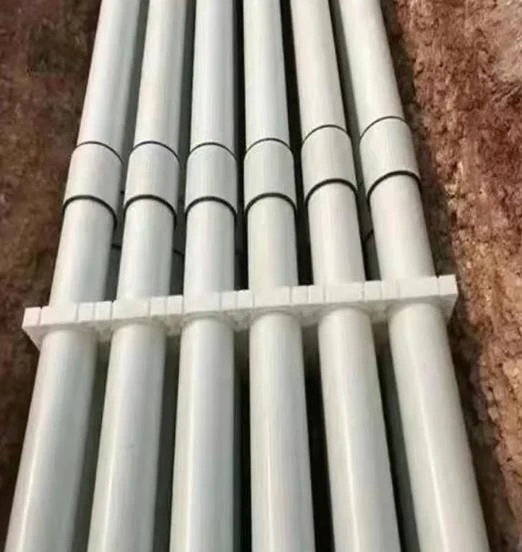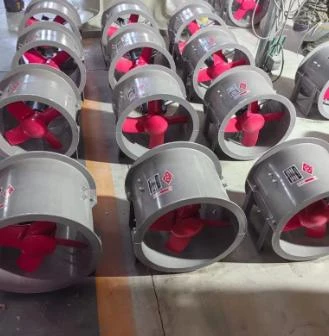

We Are Open 24 Hours a Day, 7 Days a Week, Including Weekends and Public Holidays.
In the relentless pursuit of industrial efficiency, reliability, and sustainability, the often-overlooked workhorse – the cooling tower – plays a pivotal role. From powering massive electricity generation plants to maintaining precise temperatures in critical manufacturing processes and ensuring comfortable environments in sprawling commercial complexes, effective heat rejection is non-negotiable. However, traditional cooling tower systems often operate on fixed parameters, leading to inefficiencies, increased operational costs, and potential downtime. The integration of sophisticated automation control systems marks a revolutionary leap forward, transforming passive cooling structures into intelligent, responsive assets. Hebei Longxuan Environmental Protection Equipment Co., Ltd., your premier provider of high-performance FRP solutions, is at the forefront of delivering cooling tower systems designed not just for durability, but for seamless integration with the latest automation technologies, maximizing performance and minimizing your total cost of ownership.
Strategically located in Hebei, China, Hebei Longxuan Environmental Protection Equipment Co., Ltd. stands as a leading force in the research, development, production, and global export of top-tier fiberglass reinforced plastic (FRP) products. Our unwavering commitment integrates cutting-edge manufacturing techniques with premium raw materials, guaranteeing exceptional product quality, longevity, and performance. Our extensive portfolio encompasses a wide range of FRP solutions vital for modern infrastructure, including cooling towers, pipelines, gratings, fans, pultruded profiles, environmental protection equipment, and custom fabrications. We understand the diverse and demanding needs of industries reliant on efficient heat rejection and fluid management – from industrial cooling and HVAC to power generation and petrochemical processing. Our cooling towers, particularly our advanced circular cooling tower designs, are engineered to deliver superior cooling efficiency, unmatched durability, and are inherently prepared for the future through advanced automation control integration.
Understanding the Core: Fundamentals of Cooling Tower Operation
At its essence, a cooling tower is a specialized heat exchanger. Its primary function is to reject waste heat from a process or building system into the atmosphere through the evaporation of a small portion of the circulating water. Warm water from the heat source (like a condenser or process equipment) is pumped to the top of the tower and distributed over a large surface area (the fill media). Simultaneously, air is drawn or forced through this falling water. A small fraction of the water evaporates, absorbing significant latent heat from the remaining water, thereby cooling it. This cooled water is then collected in a basin and recirculated back to the process, completing the cycle. The efficiency of this heat transfer process depends critically on factors like air flow rate, water flow rate, ambient wet-bulb temperature, and the effectiveness of the water-air contact facilitated by the fill media.
Cooling tower systems are more than just the tower structure itself. They encompass the entire closed or open loop, including pumps, piping, heat exchangers, water treatment systems, and controls. Optimizing this entire system is key to achieving energy savings, water conservation, and reliable operation. Traditional systems often run pumps and fans at constant speeds or operate based on simple timers, regardless of the actual cooling load or ambient conditions. This "always-on" or "fixed-speed" approach leads to substantial energy waste, accelerated wear and tear, and challenges in maintaining precise temperature control, especially during fluctuating loads or varying weather. It highlights the critical need for a smarter approach – automation.
The Circular Advantage: Why Circular Cooling Towers Excel
Among the various cooling tower designs, the circular cooling tower stands out for its inherent structural and aerodynamic advantages, making it an ideal candidate for automation integration. Characterized by its cylindrical shape, this design offers significant benefits over traditional rectangular counterparts:
Superior Structural Integrity: The circular shape inherently distributes structural stresses more evenly, particularly excelling in handling wind loads. High winds exert less force on a cylinder compared to a flat surface, reducing structural strain and enhancing overall stability and longevity. This is crucial for tall towers or installations in exposed locations.
Optimized Airflow Dynamics: The circular cooling tower typically employs an induced-draft counterflow design. Air is drawn in uniformly around the entire 360-degree perimeter at the base, flows vertically upwards against the downward falling water, and is exhausted centrally at the top by a powerful fan. This natural, uniform air inlet minimizes turbulence and pressure drop, allowing the fan to operate more efficiently. The counterflow arrangement also maximizes the temperature difference between air and water throughout the fill height, enhancing heat transfer efficiency.
Compact Footprint & 360° Accessibility: While offering significant cooling capacity, the circular design often has a smaller footprint per unit of cooling compared to some rectangular designs. Furthermore, the circular shape provides unobstructed 360-degree access for inspection, maintenance, and component replacement, significantly simplifying upkeep.
Enhanced Durability with FRP: Hebei Longxuan leverages the exceptional properties of Fiberglass Reinforced Plastic (FRP) in constructing our circular cooling tower range. FRP is inherently corrosion-resistant against water, chemicals, and atmospheric exposure, highly durable, UV-stabilized, and lightweight. This translates to decades of reliable service with minimal degradation, even in harsh industrial environments, drastically reducing lifecycle costs.
The Intelligence Layer: Integrating Automation Control into Cooling Tower Systems
Automation transforms a passive cooling tower into a responsive, self-optimizing component of the larger cooling tower systems. It involves layering sensors, variable frequency drives (VFDs), programmable logic controllers (PLCs), and sophisticated control algorithms onto the physical infrastructure. Here’s how it revolutionizes operation:
Variable Speed Drives (VFDs) for Fans and Pumps: This is the cornerstone of energy savings. Instead of fans and pumps running constantly at full speed, VFDs allow their speed to be precisely modulated based on real-time demand. Sensors continuously monitor the temperature of the water returning from the process and the temperature of the cooled water in the basin. The control system calculates the exact cooling required and adjusts fan and pump speeds accordingly to meet that demand exactly. Even small reductions in fan speed yield significant energy savings due to the cubic relationship between speed and power consumption (halving speed reduces power to roughly 1/8th!).
Optimized Setpoint Control: Automation systems can dynamically adjust the setpoint temperature of the cooled water based on ambient wet-bulb temperature and process requirements. Operating closer to the ambient wet-bulb temperature when possible (the theoretical minimum achievable water temperature) maximizes efficiency without compromising process needs.
Sequencing and Staging: For installations with multiple cooling tower cells or pumps, the automation system intelligently sequences and stages equipment on and off. It ensures the optimal number of cells or pumps are running to meet the load efficiently, preventing unnecessary operation and distributing wear evenly across equipment.
Water Treatment Integration: Automation can monitor key water quality parameters (pH, conductivity, biocide levels) and integrate with chemical feed systems. This ensures optimal water chemistry is maintained automatically, minimizing scale, corrosion, and biological growth, which directly impacts heat transfer efficiency and equipment lifespan.
Advanced Diagnostics and Alarms: Continuous monitoring of vibration, motor temperature, bearing health, water levels, and flow rates enables predictive maintenance. The system can alert operators to potential issues before they escalate into failures, preventing costly unplanned downtime. Remote monitoring capabilities allow oversight from control rooms or even off-site.
Adaptive Control Algorithms: Modern systems use algorithms that learn from operating patterns, weather forecasts, and electricity tariff schedules. They can proactively adjust operation to optimize for energy cost savings (e.g., pre-cooling during off-peak hours) or to handle anticipated load changes smoothly.
The Tangible Benefits of Automation Integration:
Integrating automation into cooling tower systems, particularly on inherently efficient platforms like Hebei Longxuan's circular cooling tower, delivers compelling returns:
Significant Energy Savings (15-40%+): VFD control on fans and pumps is the primary driver, drastically reducing electricity consumption, especially during partial load conditions which occur most of the time.
Reduced Water Consumption: Optimized operation minimizes evaporation and drift losses. Precise control also reduces blowdown frequency (water deliberately drained to control dissolved solids concentration) as cycles of concentration can be maintained more accurately.
Enhanced Process Reliability & Stability: Precise temperature control ensures the cooled water supply consistently meets process requirements, improving product quality and production yield.
Extended Equipment Life: Reduced mechanical stress from soft starts/stops and optimized operation, combined with better water treatment control, significantly extends the lifespan of fans, motors, pumps, fills, and the entire structure.
Lower Maintenance Costs: Predictive diagnostics allow for planned maintenance, preventing catastrophic failures. Reduced scaling and corrosion also decrease cleaning frequency and component replacement needs. The 360° access of the circular cooling tower further simplifies any required maintenance tasks.
Reduced Environmental Impact: Lower energy consumption directly translates to a smaller carbon footprint. Reduced water usage and minimized chemical discharge (due to better control) contribute to environmental stewardship.
Operational Insights & Data-Driven Decisions: Comprehensive data logging provides valuable insights into system performance, energy usage patterns, and maintenance needs, enabling informed decision-making for future optimizations.
Hebei Longxuan's Circular Cooling Tower: Engineered for Intelligent Cooling
Hebei Longxuan's circular cooling tower range is meticulously engineered to deliver maximum cooling efficiency and durability, providing the perfect physical foundation for integrating advanced automation control systems. Here's a detailed look at its specifications and advantages:
|
Parameter Category |
Specification Details |
|
Model Type |
Circular Cooling Tower |
|
Cooling Capacity |
25 - 500 Tonnes/hour (single cell) |
|
Structure Material |
FRP (Fiberglass Reinforced Plastic): Superior corrosion resistance, exceptional durability against UV, chemicals, and weathering, lightweight for easier installation. |
|
Structure Shape |
Cylindrical Design: Inherently stronger, minimizes wind load stress, improves structural integrity, and enhances overall stability. |
|
Heat Exchange System |
Fill Media: High-efficiency, flame-retardant PVC or PP fills maximize air-water contact surface area and thermal transfer efficiency. |
|
|
Water Distribution: Radial spray arms with precision nozzles ensure uniform water dispersion over the entire fill surface, preventing dry spots and optimizing cooling. |
|
Airflow Mechanism |
Fan System: Centrally mounted, high-efficiency, low-noise induced draft axial fan(s) pulling air vertically upwards (counterflow) through the fill. |
|
|
Drift Eliminators: Radial arrangement effectively captures entrained water droplets, minimizing drift loss (<0.001% of circulation rate), reducing water waste and environmental impact. |
|
Key Advantages |
Efficiency: Uniform 360° airflow and counterflow design reduce energy consumption by 15-20%+ compared to equivalent rectangular towers. Automation integration potential maximizes this further. |
|
|
Durability: Premium FRP construction ensures long-term resistance to corrosion, UV degradation, and harsh chemical environments. |
|
|
Low Maintenance: Full 360° accessibility simplifies inspection, cleaning, and component replacement. Robust design minimizes wear points. |
|
|
Space Utilization: Compact circular footprint efficiently utilizes available space, ideal for installations where radial space is preferable or constrained. |
Seamless Integration with Automation:
The design philosophy behind Hebei Longxuan's circular cooling tower inherently supports automation:
VFD-Ready Motors: Fans and pumps are equipped with motors perfectly suited for VFD control.
Strategic Sensor Placement Points: The design allows for optimal placement of temperature, flow, and level sensors for accurate control feedback.
Accessible Control Panels: Easy access for installing PLCs, VFDs, and communication gateways.
Robust Construction: Ensures sensors and wiring harnesses are protected within the durable FRP structure.
FAQs About Cooling Tower
How does automation improve cooling tower system efficiency?
Automation drastically improves cooling tower systems efficiency primarily through variable speed control of fans and pumps. By continuously monitoring cooling demand (return water temp, setpoint) and ambient conditions (wet-bulb temp), the system precisely modulates motor speeds to deliver exactly the needed cooling, avoiding wasteful constant-speed operation. This can reduce energy consumption by 15-40% or more, especially during partial loads. It also optimizes water usage through better cycles of concentration control.
What are the maintenance benefits for circular cooling towers?
Automation significantly reduces maintenance burdens for circular cooling towers. Predictive monitoring (vibration, temperature, water quality) alerts operators to potential issues before failure, enabling planned maintenance. Optimized operation reduces mechanical stress and wear on fans, motors, and bearings. Better water treatment control minimizes scaling, corrosion, and biological growth, extending fill and component life. The inherent 360° access of the circular design further simplifies any required manual inspections or servicing.
Can automation help reduce water usage in cooling towers?
Absolutely. Automation is key to reducing water consumption in cooling towers. By precisely controlling blowdown based on real-time conductivity measurements, it minimizes unnecessary water dumping while maintaining safe water quality. Optimized fan speed control also reduces evaporation rates compared to constant over-cooling. Advanced systems can even integrate weather data to further fine-tune operation for minimal water loss.
Why choose a circular cooling tower for automation?
The circular cooling tower design is exceptionally well-suited for automation integration. Its uniform 360° air intake and counterflow configuration provide inherently stable and predictable airflow dynamics, making control algorithms more effective. The structural strength (especially against wind) ensures sensor stability and protects control components. The compact footprint and accessibility also simplify installation and maintenance of automation hardware.
What ROI can I expect from cooling tower automation?
Return on Investment (ROI) for cooling tower automation is typically rapid, often within 1-3 years. The primary drivers are substantial reductions in electricity costs (from fan and pump VFDs) and water savings (optimized blowdown and reduced drift/evaporation). Additional savings come from lower chemical usage, reduced maintenance costs, extended equipment life, and minimized downtime. The exact ROI depends on local utility costs, operating hours, and the initial efficiency of the existing system, but the savings are consistently significant.
The integration of automation control into cooling tower systems is no longer a luxury; it's a strategic imperative for businesses seeking operational excellence, cost reduction, and environmental responsibility. Moving beyond fixed-speed operation unlocks immense potential for energy and water savings, enhances system reliability, and simplifies maintenance. Hebei Longxuan Environmental Protection Equipment Co., Ltd. is your ideal partner in this journey. Our high-performance circular cooling tower, built with premium corrosion-resistant FRP and designed for optimal efficiency and accessibility, provides the perfect physical platform ready for seamless automation integration.
By choosing Hebei Longxuan, you invest in more than just a cooling tower; you invest in a smart, durable, and future-proof solution engineered for intelligent cooling. Our expertise in FRP manufacturing ensures longevity, while our understanding of modern cooling tower systems needs positions us to deliver solutions that meet today's demands and adapt to tomorrow's challenges. Contact Hebei Longxuan today to explore how our automated cooling tower systems, featuring the efficient circular cooling tower design, can revolutionize your operations, cut costs, and contribute to your sustainability goals. Let us help you elevate your cooling efficiency to new heights.
Prev This is the first article





Address
20 Xingyuan South Street, Zaoqiang County, Hengshui City, Hebei Province, China










